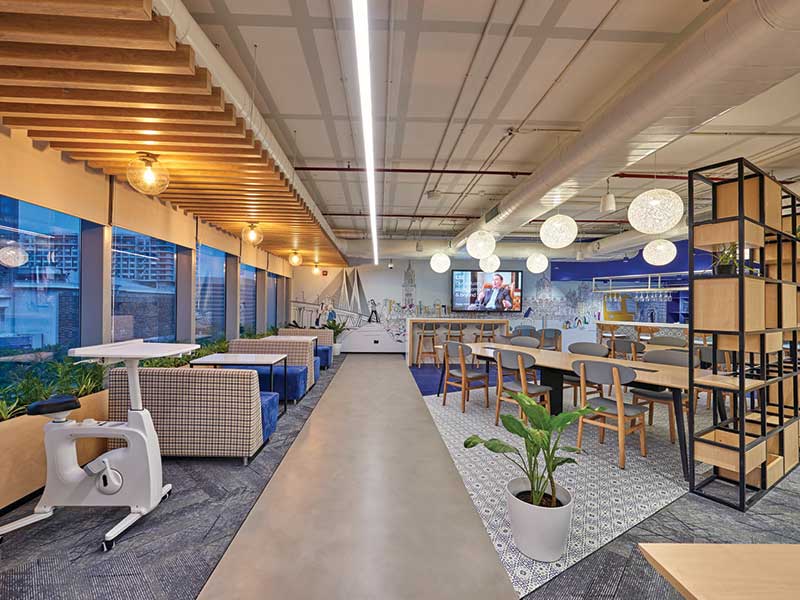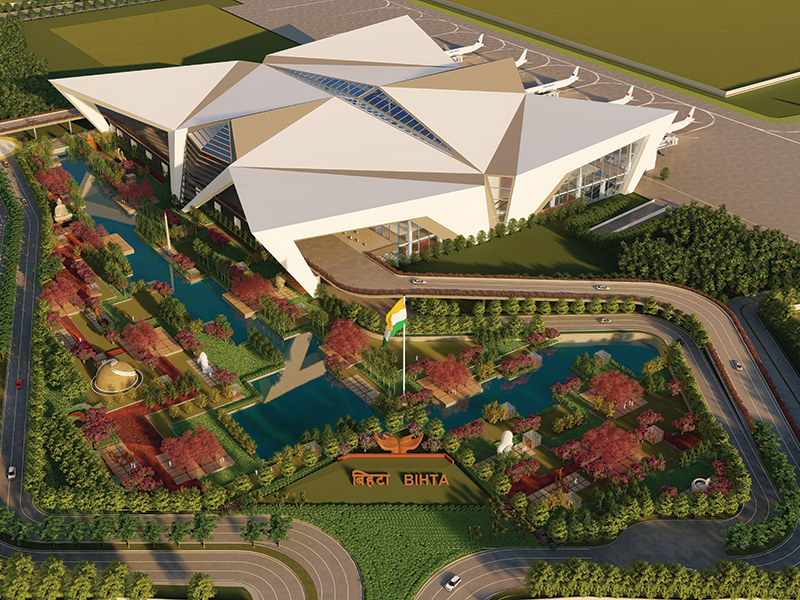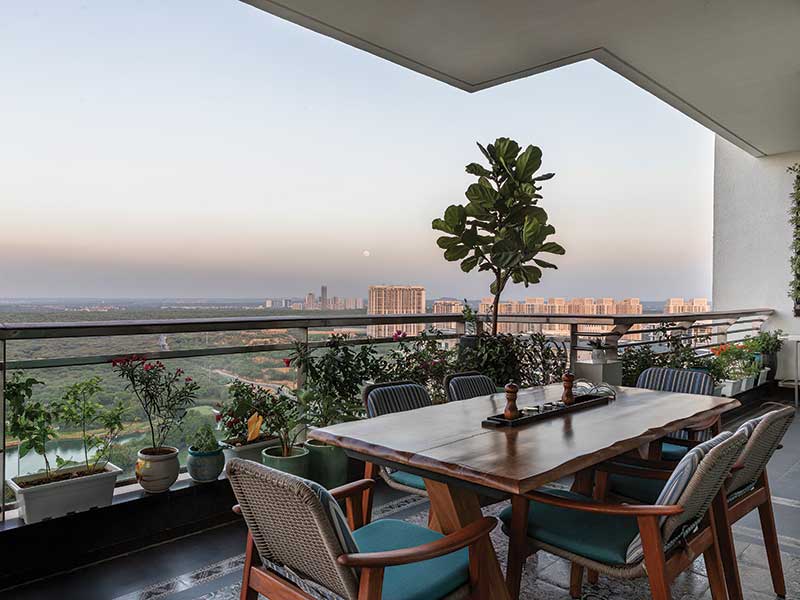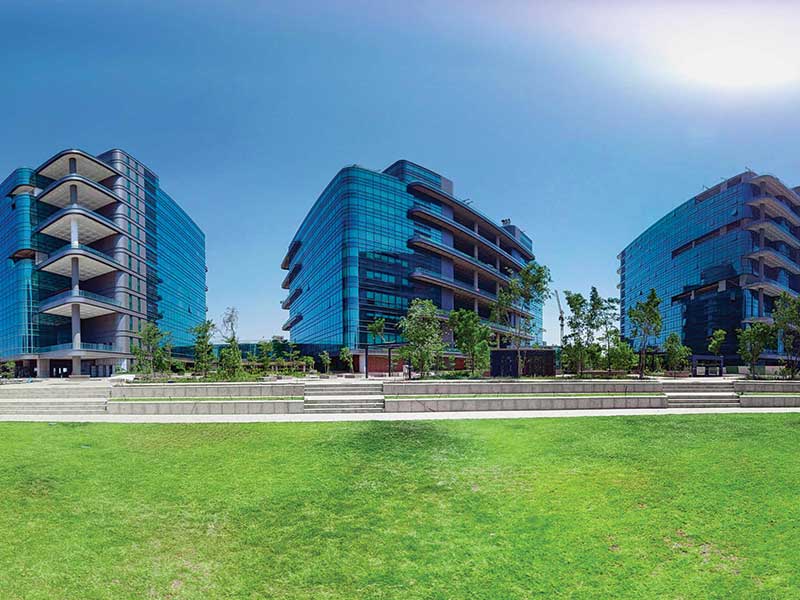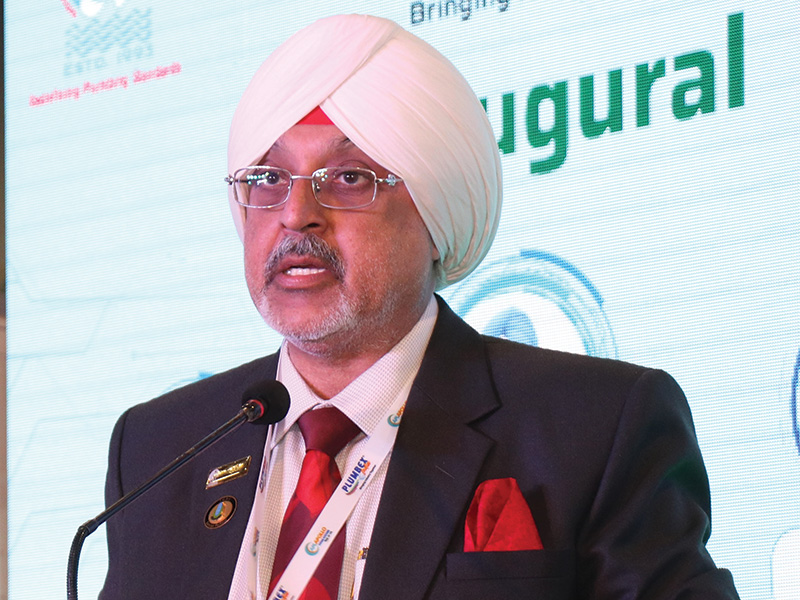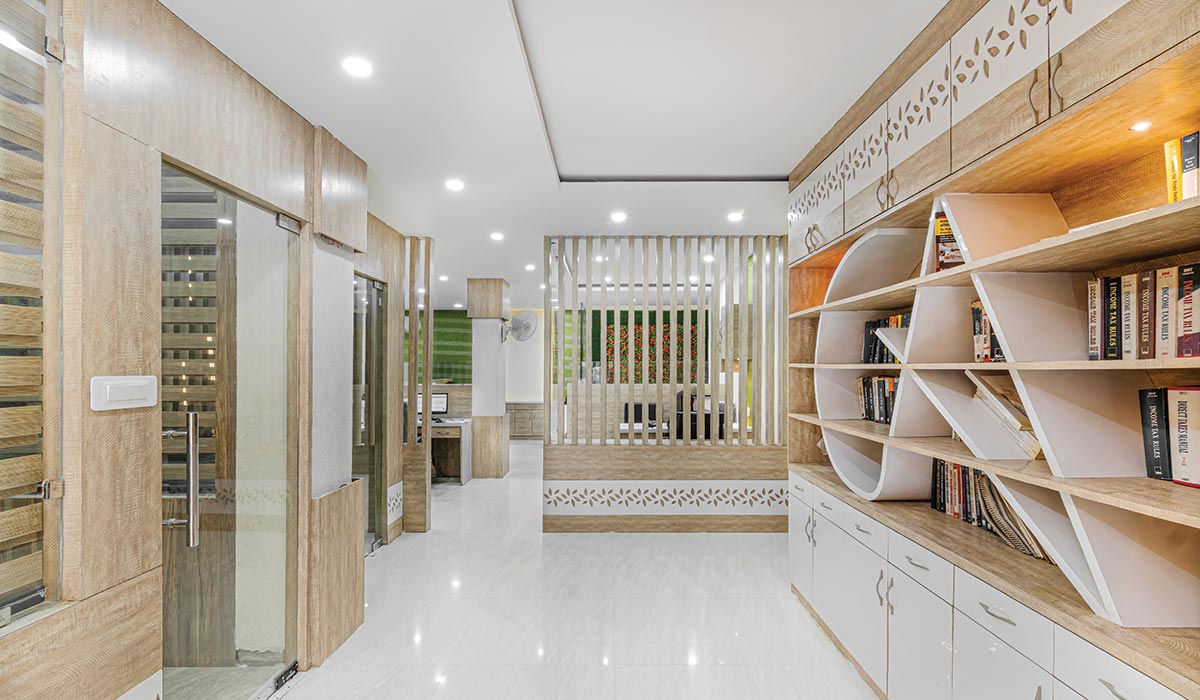
Says Ar. Mayooree Saxena at SAI Consultants, “In just a few months this pandemic has changed how and where we work, forcing us to come up with different and flexible ways of working. As we start to settle into this new normal, we look at various trends that will impact the kind of workplaces we will inhabit in a post-pandemic world. Based on the recent research that shows that most of the Covid-19 transmission happens indoors, green and healthy interior solutions would be the prime considerations of designing. The post-Covid world demands social distancing and reduced gatherings along with the recognition of effective remote working. As a result, offices will now tend to shrink in terms of the size of physical spaces, and the number of people occupying the workplace at a given time.
Determination of safe occupancy levels and modifications in workspaces would be the prime challenges. Accordingly, other design considerations include re-entry options, flow patterns, air conditioning design, identification of risk points within a space, cleaning, and maintenance strategies. Some ideas to create a safe environment include use of adaptable furniture, selection of anti-microbial finish materials that are easy to sanitize, and the invention of 21st century appliances and technology that limit surface touch.”
Offices will now tend to shrink in terms of the size of physical spaces and the number of people occupying the workplace at a given time
Ar. Mayooree Saxena
“The coronavirus pandemic has altered our lives in a shot span and made business operations complex, giving rise to a new work system – Work-From-Home. Though people have been successful in getting some types of work done remotely and over video, a large section of the workforce is struggling with the generative work that creates new ideas and solves complex problems. Our study also tells us that after months of working apart, employees want to return to the office to be with other people, socialise and collaborate in ways that just aren’t possible remotely,” says Uli Gwinner, President, Steelcase Asia Pacific.
Businesses around the world have witnessed some unprecedented challenges impacting the way we work. The sudden shift in workspace dynamics accelerated by the pandemic has further propelled the importance of creating workspaces that are both employee-centric and conducive – allowing us to socialise, collaborate, focus, and rejuvenate. One must balance the need for such compelling spaces with the need for safety. Meanwhile, these spaces will pivot towards supporting the physical distancing and cleaning protocols that are required to create a safer work environment.
Coming together in the workplace to socialise and collaborate - bringing energy and warmth - will become the greatest purpose that a post-Covid-19 office can fulfil; so we’ll continue to be drawn to more residentially-inspired comfortable settings, which also support employee performance
Uli Gwinner
“As we study the new issues of creating safer work environments in the Covid-19 world, we’ve discovered three main design challenges – physical distancing, circulation patterns, and spatial context. Organisations can look at three key strategies to tackle them:
Density: Reducing the number of people accommodated within a space to satisfy physical distancing requirements.
Geometry: Changing the arrangement of furniture to maximize distance and minimize close face-to-face orientation.
Division: Adding screens or panels to create boundaries and barriers between people, spaces and pathways.
These strategies should be used in combination to address the design challenges for creating shared spaces where people can come together more safely, whilst getting the flexibility they need to toggle between creating greater distance. In addition, organisations may look to equip these spaces with furniture that offers more flexibility - for example, freestanding solutions that can be easily moved apart to accommodate distancing, placed at angles to change geometry, or shielded to create division – whilst supporting generative collaboration.”
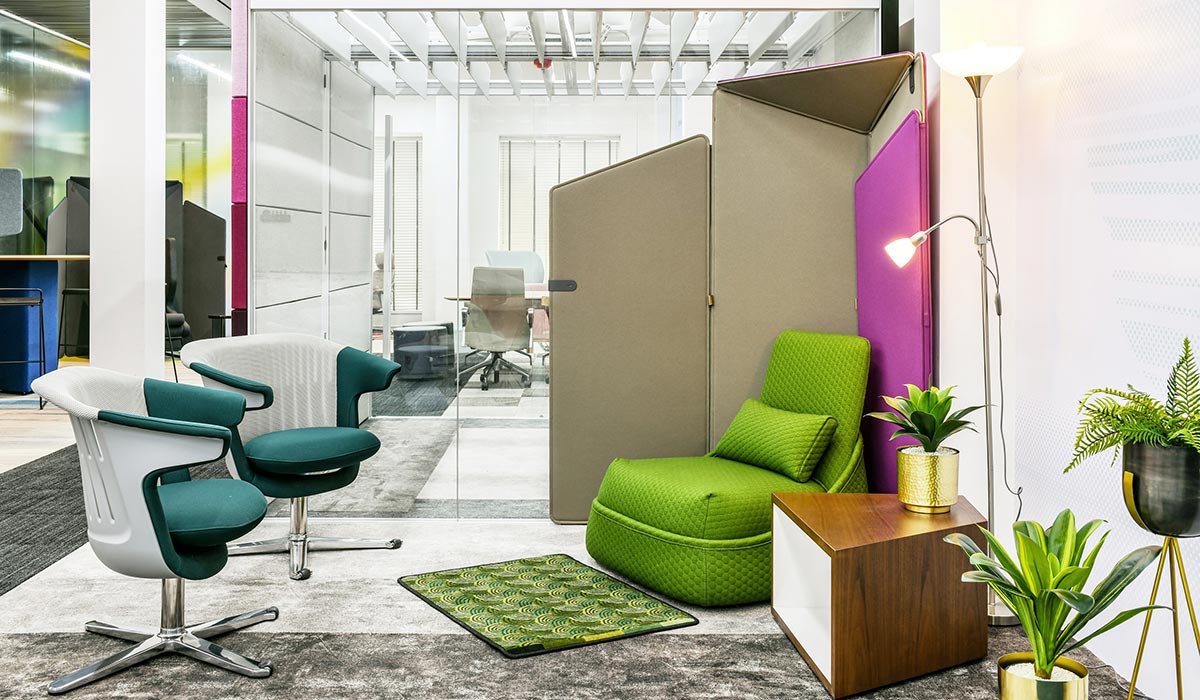
Ashish Aggarwal, CEO, Indo Innovations informs that since companies operating out of commercial offices and buildings are expected to maintain social distancing norms even after the pandemic ends, experts from the healthcare and interior design industries agree that opening up offices after the pandemic would require both short term fixes (such as boosting worker confidence) and long-term design upgrades and modifications. However, the underlying focus would be on placing hygiene at the heart of the new workplace.
No significant investment will be made right now on solutions since they could be rendered ineffective by our understanding of the virus in the next couple of months
Ashish Aggarwal
“Unsurprisingly, of course, everyone is heralding the ousting of open floor/plan workplaces and asking for the return to private offices and huddle rooms. Yet experts from across industries and interior design companies agree that all the solutions being thought of right now are purely tactical. Which means, no significant investment will be made right now on solutions since they could be rendered ineffective by our understanding of the virus in the next couple of months.”
“We are constantly working with interior designers and architects to recreate the office design. Our products help them in creating the desired spaces as our furniture can be configured in various layouts as per the needs of the users, while our new ranges like PlayWorks and Square Series are not only easily configurable, but are also designed keeping in mind the social distancing norms.”
According to Raman Gupta, Director-Branding & Construction, GBP Group, post Covid-19, will evolve in terms of designing and hygiene. “The designing of office spaces and commercial complexes will undergo transformation as the risks associated with it might linger on. Everyone would like a commercial or an office space which is not only spick and span but also is equipped with amenities that provide safety to life. While the newer ones might have to start everything from the drawing board, the older ones would make the necessary changes to meet the new standards of hygiene.”
Post Covid-19, demand for office spaces that can meet the enhanced sense of hygiene and safe environment will dictate the terms
Raman Gupta
In his view, after the lockdown is over, office spaces will in all likelihood go for cubicles or areas that are designed to sanitize people entering the premises. Automated entrances will become a normal feature in all the complexes being designed. Tech-based systems that reduce human contact in common areas will see a rise. To respect the minimum distance, the office spaces will become more spacious such that the distance factor between two seats will come into play. Another trend that can come in co-working space would be to have separate rooms on a floor with various seating capacity as against the trend in India where you also have an option of sitting in the common area by paying less. The thorough cleaning and disinfection of commonly touched areas will gain more significance as offices will also implement a strict ‘Do not touch’ policy where people or the outsiders will not be allowed to touch anything inside the space. The use of CCTVs will come into greater play.
Manas Mehrotra, Chairman, 315Work Avenue, believes that there is currently more interest from corporates in having dedicated and secure private offices. “Corporates and large enterprises will avoid high capital expenditures and look towards flexible working spaces to expand business. Another win for flexible workspaces will also come from the fact that companies will have to practice social distancing within their campuses, which means they might have to station some employees in different locations. Therefore, with unique packages, interiors, designs and offers, co-working space providers are in a unique position to leverage the opportunity and make the segment more attractive for its consumers. “
“Technology that enables contactless interaction or engagement is now available and corporates will be looking to make the most from contactless appliances and gadgets (VMS, Biometrics, Lifts, Doors, etc), sensor-based fixtures (hand sanitizer/soap dispensers, taps, urinal, lights, etc), and they will also be looking to implement contactless deliveries and movement (pickup/drop boxes), along with adopting robotic cleaning system to make workplaces safer.”
He adds, “We had never thought of a time when we will have SOP and guidelines for hygiene and cleanliness of this level. From thermal temperature monitoring to check up through pulse oximeters and further to UV based, all of this has now become the new normal. As no organization had earlier considered social distancing while designing their office, they will now be facing a huge challenge in accommodating the huge workforce.”
There is currently more interest from corporates in having dedicated and secure private offices; but they will avoid high capital expenditures and look towards flexible working spaces to expand business
Manas Mehrotra
“In consultation with a panel of experts on our board which also includes doctors we have come up with two very differentiating products to provide healthcare facility standard sanitization at our workspaces. First is making use of an ‘Ioniser,’ a patented technology that provides air filtration and kills all the germs in the air. Second is making use of coatings and paints which always keeps the surfaces sanitized. We have also redesigned our seating arrangement at workstations and in areas like the cafeteria, lift, breakout lounges, etc. to maintain 6 feet distance between two individuals,” he adds.
Advocating biophilic design to reduce workers’ stress and enhance their sense of well-being in an indoor environment by bringing the outdoors inside, Yaara Plaves, Head of the National Sustainability Forum (NSF) at Hames Sharley, says, “Biophilic design mimics the experience of nature within an ostensibly unnatural space. It’s bringing the outside in. This is achieved by a whole host of practical design measures, from sensory cues that recall the natural world (employing sights, sounds and even smells that we relate to the great outdoors) to more subtle approaches such as the use of contours, patterns and textures that recall less structured, angled and ordered surroundings. Use of natural materials in the creation of these organic shapes adds another element, while increased air and light increase the sense of peace. One principle of the technique is to introduce mystery to a building, a sense that a space should be explored for us to appreciate it fully.
Biophilic design not only helps future-proof spaces by making them more healthy in the event of future lockdowns, it may even assist in limiting further outbreaks. It’s just part of a rethink about how we interact as a species with the planet, with each other, and with the spaces we occupy
Yaara Plaves
Biophilia is socially sustainable because it improves physical and mental health. It’s environmentally sustainable as it increases opportunities for biodiversity and can help reduce carbon emissions, using plants and natural materials. Biophilia is invaluable in weaving nature into the design process, at every level. From building façade to carpet selection, from urban design to graphics, all aspects of design have opportunities to learn from nature as a building block, as part of a regenerative design strategy.
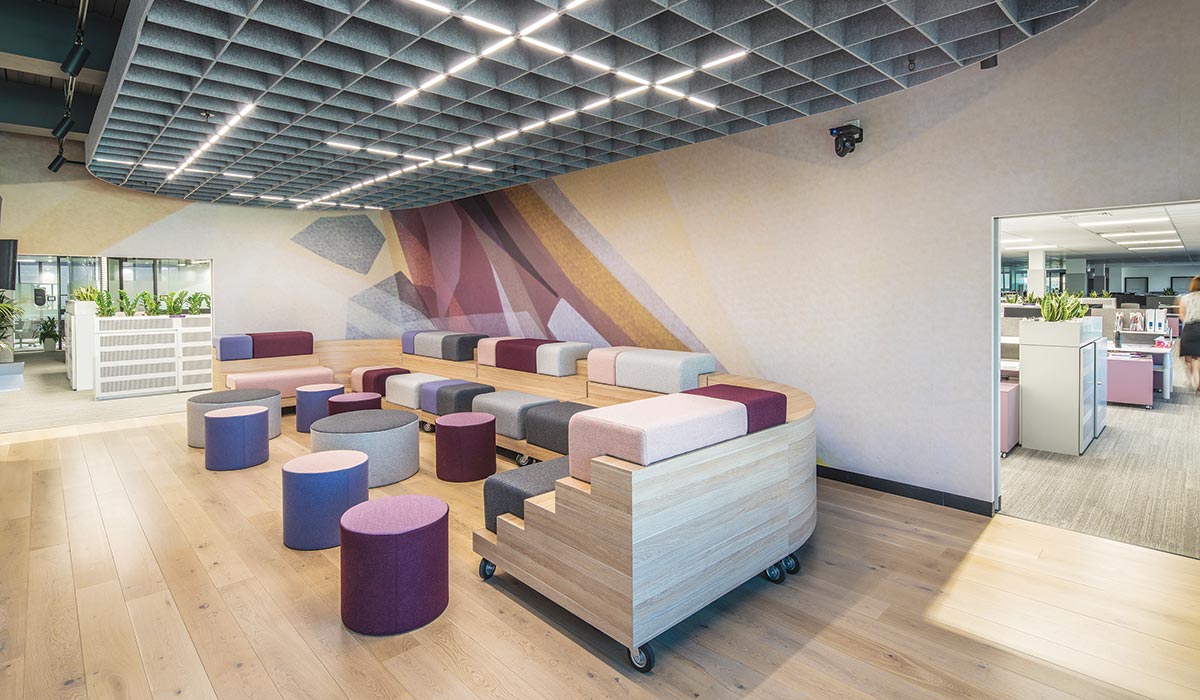
Indeed, even before coronavirus took us in its grip, designers were actively exploring biophilic design for its positive effect on emotional wellbeing. The tenets of the practice also make good sense in terms of sustainability, help improve employee’s productivity, reduce the amount of sick leave taken per year and heighten the desire to be present.
Says Ganesh L Khanolkar, Director Operations, Netix Controls India, “In recent times, the commercial real estate industry has begun to proactively adopt a unified and centralized smart building management solutions, which leverages AI and IoT technologies to reshape building operations and maintenance. This is because, the post Covid-19 ‘new normal’ requires facilities management to deliver unprecedented quality and consistency than before. Employees may not be able to come back to the same layouts as before, especially in offices that have a shared workspace or requires people to work in close proximity. In such instances, IoT and sensor-based smart building management technologies make it possible to measure occupancy on an ongoing basis, and in identifying spaces that require more careful management, due to the relative footfalls they draw.”
“Knowing where people are inside the building is a critical data point for decision-makers. For example, they can choose to move people to less-used areas or reroute traffic to reduce the number of people passing each other. Management might decide to program the elevators to move in a single direction, or adjust the cleaning schedule to ensure that high-traffic areas are disinfected several times a day.”
Digital tools can empower building management teams by giving them means to monitor and enforce social distancing in real-time
Ganesh L Khanolkar









